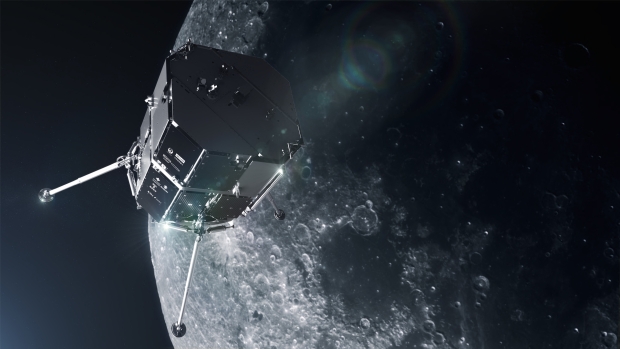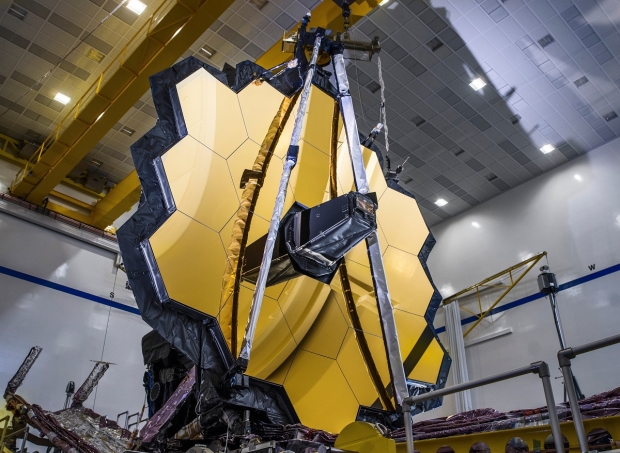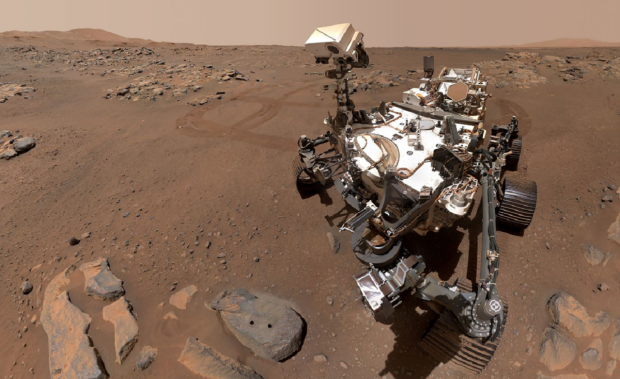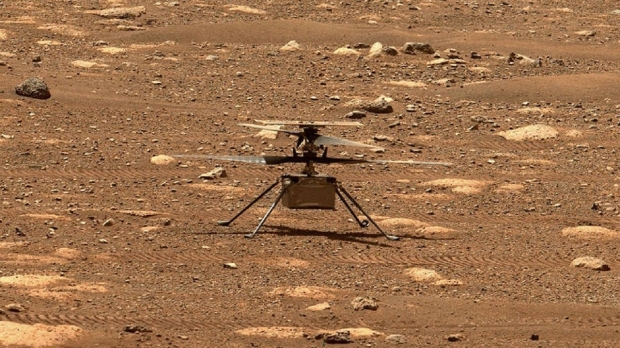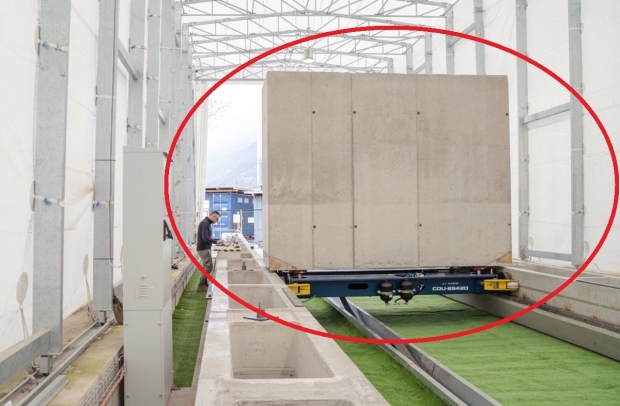Science, Space, Health & Robotics News - Page 55
First private spacecraft to land on the Moon crashes failing historic mission
A Japanese company that's attempting to land the first private spacecraft on the surface of the Moon may have failed their mission, or at the very least, it's not looking good.
ispace launched its Hakuto-R spacecraft on the back of SpaceX's Falcon 9 in December 2022 and has been in a circular orbit around the Moon for quite some time. ispace announced that it was expecting that Hakuto-R would touch down on the surface of the Moon on April 25 after sharing some photos of the Moon and Earth that were snapped by the lander as it continued its long orbit.
ispace selected the northeastern quadrant of the Moon for its designated landing site as the location filled all necessary mission requirements, such as a viable surface for the spacecraft's landing technology, scientific exploration objectives, and various other objectives. The Japanese company took to its Twitter account and blog to write that the spacecraft was expected to land on the surface of the Moon at 1:40 am JST on April 26, 2023, but HAKUTO-R Mission Control Center located in Nihonbashi, Tokyo, is unable to confirm the success of the Lunar Lander.
Falling Starship debris caught on video destroying minivan
SpaceX recently conducted its first orbital test flight of Starship, the rocket poised to be the transportation method astronauts will take to walk on the surface of Mars.
Starship's first orbital test flight took place on April 20, and only four minutes after liftoff, SpaceX was forced into initiating the flight termination sequence that resulted in the nearly 400-foot rocket exploding mid-air. The call to terminate the mission came after Starship's first-stage booster, Super Heavy, failed to detach from the second-stage spacecraft, causing the entire rocket to begin to tumble, lose altitude, and ultimately, fail its mission.
Despite this tragic ending, SpaceX employees, along with company CEO Elon Musk rejoiced at what was achieved in the short amount of time Starship was airborne, with Musk taking to Twitter to congratulate all SpaceX employees on a great launch. So, why was SpaceX happy even though Starship was intentionally exploded? It's simple, SpaceX, along with Elon Musk, believed there was about a 50/50 chance Starship would even make it off the launch pad. Additionally, SpaceX was just happy to see Starship reach a height above its launch tower.
Continue reading: Falling Starship debris caught on video destroying minivan (full post)
First private spacecraft to make historic landing on the Moon today
A Japanese company will attempting to secure first place in successfully landing private spacecraft on the surface of the Moon.
The Japanese company is ispace, and the spacecraft that is scheduled to touch down on the surface of the Moon is called Hakuto-R, which was recently launched by SpaceX's workhorse launch vehicle, the Falcon 9 rocket. Hakuto-R was launched in December 2022 and is currently in a circular orbit around the Moon at approximately 62 miles above its surface. ispace took to its official Twitter account to share an image of the surface of the Moon at 62 miles. The image was captured by Hakuto-R's on-board camera at 4:32 am on April 15 (JST).
The images didn't stop there as ispace shared an image of the lander snapping a photograph of Earth during the recent solar eclipse. This image, which can be seen below, was also taken at approximately 62 miles above the surface of the moon. As for the landing, ispace has shared an image of its designated primary landing site, which is located in the northeastern quadrant of the Moon. According to ispace, this location meets all of the technical specifications of the lander's technology, scientific exploration objectives, and mission requirements for its other customers.
Continue reading: First private spacecraft to make historic landing on the Moon today (full post)
NASA confirms its $10 billion James Webb Space Telescope has glitched
NASA's James Webb Space Telescope (JWST) has experienced a glitch in its Mid Infrared Instrument (MIRI), the instrument used to capture light in the wavelength range of 5 to 28 microns.
NASA has taken to its blog on its website to explain that during Webb's routine monthly performance monitoring and calibration check, NASA engineers noticed a discrepancy in the data Webb's MIRI instrument was observing and what has already been well documented. To calibrate Webb's instrument, NASA engineers compare the brightness of standard stars that have already been cataloged to what Webb's instruments are observing.
Throughout this process, the data discrepancy was discovered, and further analysis was conducted on MIRI's Medium Resolution Spectroscopy (MRS) mode. NASA noticed that since Webb has been in operation, the amount of light being registered by MIRI's sensors when Webb is in the MRS mode has decreased. NASA notes that there is no risk to the MIRI instrument itself and that there has been zero impact on all other observation modes within MIRI and on Webb's other scientific instruments.
Continue reading: NASA confirms its $10 billion James Webb Space Telescope has glitched (full post)
NASA's Mars rover snapped an incredible photo of a dusty Mars helicopter
NASA's newest Mars rover, Perseverance, has turned its instruments on its scout helicopter Ingenuity, capturing an awesome close-up photograph of the first aircraft to fly on the surface of another planet.
Perseverance and Ingenuity touched down on the Red Planet in February 2021 and, since then, have been exploring the Jezero Crater in search of any signs of ancient microbial life. Perseverance, along with Ingenuity, make a tag team partnership that involves Ingenuity scouting ahead of the Mars rover to observe any viable locations for scientific operations, upcoming terrain, potential hazards, and strategic travel planning. With Ingenuity's reconnaissance data, NASA engineers are able to plan an optimized travel route for Perseverance.
Throughout its two-year stay on the Red Planet, Ingenuity has conducted 50 flights, which has completely blown past its primary mission objective of attempting just one flight. On April 16, 2023, Perseverance came within only 75 feet of Ingenuity, marking the closest meeting between the two explorers in nearly two years, according to NASA JPL. Perseverance pointed its Mastcam-Z at Ingenuity and snapped some photographs that were then color-corrected.
Watch SpaceX's Starship launch and explode in 8K slow motion
Last week SpaceX conducted its first orbital test flight of Starship, the rocket slated to be the transportation humans will take to walk on Mars.
After a very long road of development, SpaceX launched Starship on April 20 from SpaceX's seaside Starbase facility at Boca Chica Beach, South Texas. The 394-foot-tall rocket shocked onlookers as it engaged its thrusters and began climbing in altitude.
The rocket consists of two stages. The first stage is called Super Heavy and stands at 165-feet-tall, and features 33 Raptor engines that generate a staggering 16.5 million pounds of thrust at liftoff, which is twice NASA's Space Launch System (SLS) rocket, the previous record holder for the most powerful rocket ever launched. Stacked atop Super Heavy is the second stage called Starship, which is where the rocket's payload will be stored along with any future astronauts.
Continue reading: Watch SpaceX's Starship launch and explode in 8K slow motion (full post)
China to copy NASA's helicopter to beat the US in the Mars sample return race
China revealed more details about its Tianwen-3 mission at the International Conference of Deep Space Sciences in Hefei, Anhui province, on April 22, where it will send two rockets around 2030 and bring back 500 grams of Mars samples.
The mission will include launching two Long March 5 rockets at the end of the decade that will each be carrying a lander, ascent vehicle, orbiter, and return module. Spacenews reports that China will be leveraging the same technology that enabled the space agency to pull off the impressive entry, descent, and landing of the Zhurong rover on July 12, 2021. As for collecting Mars samples, China will be using the same robotic arm design as what was used in China's Chang'e-5 lunar sample return mission.
The robotic arm will be able to drill into the surface of Mars and collect samples from as far as two meters (6.5 feet) below the surface. The space agency expects to bring back approximately 500 grams of Martian samples that will be analyzed for the presence of ancient microbial life. As for the landing part of the mission, China unveiled plans to develop either a six-legged crawling robot or an Ingenuity-inspired helicopter that will transport the samples to the two-stage ascent vehicle.
Parrot-to-Parrot video calling is real and the results are surprising
A team of researchers has analyzed the behavior of parrots that engaged in numerous video calls with other parrots.
The team published the new paper in the scientific journal Proceedings of the 2023 CHI Conference on Human Factors in Computing Systems and detailed a three-month-long experiment that involved eighteen parrots and many video call sessions. Each of the eighteen parrots were taught how to request and engage in video calls with other parrots in an effort to see if the parrot's quality of life would improve. The birds were first taught how to request a video call with another parrot by the ringing of a special bell.
The owner of the parrot would then present the bird with a tablet that showed images of other parrots involved in the experiment. The bird was then taught to select the friend it wished to talk to, and then the owner would engage the call. The team then watched the behavior of all the birds and found that despite the physical limitation of not being next to each other, the birds showed a significant improvement in their quality of life through singing together, showing each other items they had found, mirroring movements, attempting to groom each other, and even sleeping trying to sleep next to each other.
Continue reading: Parrot-to-Parrot video calling is real and the results are surprising (full post)
Hundreds of 24-ton bricks set to solve a major problem with renewable energy
The recent surge in awareness around renewable energy through the abundant climate change concerns has led a startup company to put forward a very simple, yet nonetheless impressive, solution to one of renewable energy's biggest problems.
A new report from CNET has highlighted Switzerland-based startup Energy Vault and the two facilities its constructing. Above is an image of Energy Vault's very first large-scale building that's located in Rudong, China, just north of Shanghai. So, what are these buildings? Below is an image of a 24-ton brick that is made of compressed dirt. That block is then brought to the top of the building by an elevator powered by solar panels or wind turbines.
The heavy dirt brick will be approximately 300 feet up the side of the building, where it will then be slowly lowered by an automated system. As the brick is returning back down to the surface, it's spinning electrical power generators. Now picture this process on repeat with hundreds of 24-ton bricks, each generating an entire megawatt every six feet it's lowered. Essentially, Energy Vault has created a building that contains gravity batteries that are able to store 100 megawatt-hours of electricity, or at least the building near Shanghai can.
NASA selects who will live in a Mars surface simulation for 1 year
NASA is continuing on its long road of getting humans on the surface of Mars, and a part of that development journey is figuring out what it will be like for humans to live on the surface of the Red Planet - without actually stepping foot on it.
Mars already presents numerous challenges for human exploration, but one of NASA's biggest concerns is how humans will survive the long stays on the Red Planet once we manage to get there. In an effort to understand more about the surface of Mars and how humans will react to their restrictive living quarters, NASA has set up Crew Health and Performance Exploration Analog, or CHAPEA, which is a ground-based mission that is expected to begin in June at NASA's Johnson Space Center in Houston.
The upcoming mission is just one of three planned Mars simulation missions and will include numerous challenges for the participants. NASA writes in its blog that participants will be faced with many real-world problems, such as limited resources, equipment failures, communication delays, environmental stressors, and more.
Continue reading: NASA selects who will live in a Mars surface simulation for 1 year (full post)


